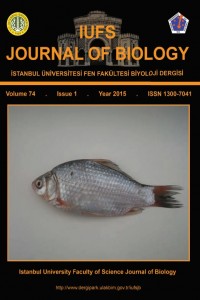Three wheat cultivars’ responses to NaCl treatments: changes in lipid peroxidation, cell viability, hydrogen peroxide content and antioxidant defence parameters
Abstract
The responses of lipid peroxidation, antioxidant defence parameters, the content of hydrogen peroxide (H2O2) and cell viability were investigated in callus cultures of Triticum aestivum L. (wheat) ‘Tekirdağ’, ‘Pehlivan’ and ‘Flamura-85’ cultivars under various NaCl concentrations (0, 0.05, 0.1 and 0.15 M). According to two-way ANOVA, the interaction between NaCl treatments and cultivars on the antioxidant enzyme activity and malondialdehyde (MDA), proline and H2O2 content were statistically significant. Statistically significant differences between cultivars were also detected using two-way ANOVA analyses of antioxidant enzyme activities, MDA and H2O2 content. The activity of antioxidant enzymes such as superoxide dismutase (SOD), guaiacol peroxidase (POX), catalase (CAT), ascorbate peroxidase (APX) and glutathione reductase (GR) increased under salt treatments, except for catalase activity in Tekirdağ. Proline and oxidized glutathione (GSSG) content increased significantly with NaCl concentrations whereas the reduced glutathione (GSH) increase was not statistically significant. GSH/GSSG ratios decreased under salt treatments in all three wheat cultivars as compared to the control. MDA and H2O2 content increased, but the viabilities of callus cultures decreased as salt concentrations increased. Based on the cellular responses of three different wheat calli against salinity, Flamure-85 was the best one because of its superior antioxidant defence system.
Details
| Primary Language | English |
|---|---|
| Journal Section | Research Articles |
| Authors | |
| Publication Date | November 22, 2016 |
| Submission Date | November 2, 2016 |
| Published in Issue | Year 2015 Volume: 74 Issue: 1 |


